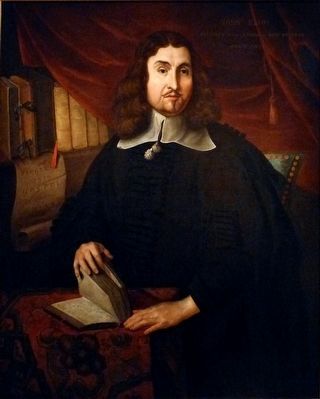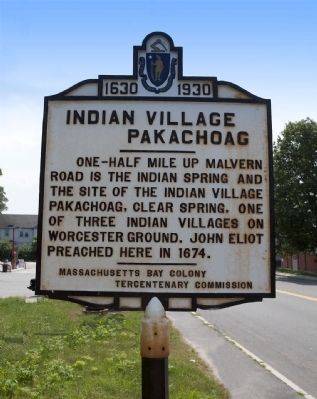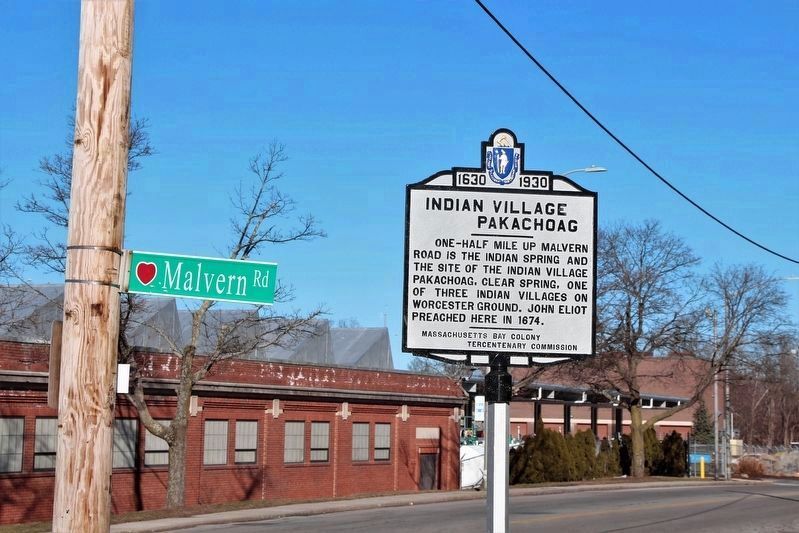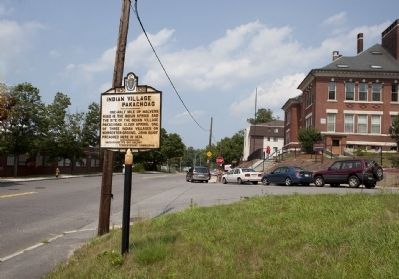Worcester in Worcester County, Massachusetts — The American Northeast (New England)
Indian Village Pakachoag
1630 - 1930
One-half mile up Malvern Road is the Indian spring and the site of the Indian village Pakachoag, clear spring, one of the three Indian villages on Worcester ground. John Eliot preached here in 1674.
Erected 1930 by Massachusetts Bay Colony-Tercentenary Commission.
Topics and series. This historical marker is listed in this topic list: Colonial Era. In addition, it is included in the Massachusetts Bay Colony—Tercentenary Commission Markers series list. A significant historical year for this entry is 1674.
Location. 42° 14.104′ N, 71° 49.023′ W. Marker is in Worcester, Massachusetts, in Worcester County. Marker is at the intersection of Southbridge Street (Massachusetts Route 12) and Malvern Street, on the right when traveling south on Southbridge Street. Touch for map. Marker is in this post office area: Worcester MA 01610, United States of America. Touch for directions.
Other nearby markers. At least 8 other markers are within 2 miles of this marker, measured as the crow flies. John J. (Jack) Barry '10 (approx. 0.4 miles away); Bartholomew F. (Bart) Sullivan (approx. 0.4 miles away); The Goddard Rocket Launching Site (approx. one mile away); Green Island (approx. 1.2 miles away); The Blackstone Canal: 1828-1848 (approx. 1.2 miles away); Worcester (approx. 1.2 miles away); Jonas Rice Homesite (approx. 1.8 miles away); Memorial (approx. 2 miles away). Touch for a list and map of all markers in Worcester.
Also see . . .
1. Original 1930 publication by the Commonwealth of Massachusetts of Tercentenary Commission Markers. Internet Archive website entry:
Original 1930 publication by the Commonwealth of Massachusetts of Tercentenary Commission Markers, commemorating the three hundredth anniversary of the Massachusetts Bay Colony. (Submitted on July 20, 2011, by Russell Chaffee Bixby of Bernardston, Massachusetts.)
2. Preservation Worcester. Website homepage:
Preservation Worcester for more than forty years, has been a source for critical thinking and education in matters of the city's architectural integrity, the cohesiveness of neighborhoods, and the preservation of culturally significant structures. (Submitted on July 20, 2011, by Russell Chaffee Bixby of Bernardston, Massachusetts.)

Photographed By Allen C. Browne, August 9, 2015
4. John Eliot
This portrait by of John Eliot an unknown artist hangs in the National Portrait Gallery in Washington, DC.
“No Puritan leader in seventeenth-century New England was more interested in the welfare of the region's Native American population than John Eliot. A graduate of Cambridge University, Eliot immigrated to Boston in 1631. While serving as the pastor of a church in Roxbury, Eliot began to search for ways to perform missionary work among the region's tribal communities. He studied the local Algonquian language, and by 1646 he was preaching to the native inhabitants in their own language.
In order to protect his potential Christian converts, he established the first of fourteen towns for so called ‘praying Indians’ in 1651. Perhaps his most extraordinary accomplishment, though, was the translation of the Bible into an Algonquian dialect a task that required Eliot to invent new words and new grammatical structures. Its publication in 1661 marked the first printing of a Bible in America.” — National Portrait Gallery
“No Puritan leader in seventeenth-century New England was more interested in the welfare of the region's Native American population than John Eliot. A graduate of Cambridge University, Eliot immigrated to Boston in 1631. While serving as the pastor of a church in Roxbury, Eliot began to search for ways to perform missionary work among the region's tribal communities. He studied the local Algonquian language, and by 1646 he was preaching to the native inhabitants in their own language.
In order to protect his potential Christian converts, he established the first of fourteen towns for so called ‘praying Indians’ in 1651. Perhaps his most extraordinary accomplishment, though, was the translation of the Bible into an Algonquian dialect a task that required Eliot to invent new words and new grammatical structures. Its publication in 1661 marked the first printing of a Bible in America.” — National Portrait Gallery
Credits. This page was last revised on September 12, 2021. It was originally submitted on July 20, 2011, by Russell Chaffee Bixby of Bernardston, Massachusetts. This page has been viewed 1,456 times since then and 43 times this year. Last updated on September 11, 2015, by Steve Masler of Memphis, Tennessee. Photos: 1. submitted on July 20, 2011, by Russell Chaffee Bixby of Bernardston, Massachusetts. 2. submitted on December 29, 2019, by Stephen St. Denis of Worcester, Massachusetts. 3. submitted on July 20, 2011, by Russell Chaffee Bixby of Bernardston, Massachusetts. 4. submitted on October 24, 2015, by Allen C. Browne of Silver Spring, Maryland. • Bill Pfingsten was the editor who published this page.


